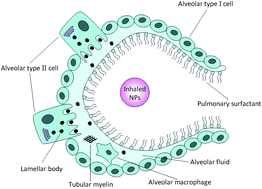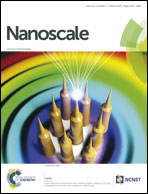Promote potential applications of nanoparticles as respiratory drug carrier: insights from molecular dynamics simulations†
Abstract
Nanoparticles (NPs) show great promises in biomedical applications as the respiratory drug carrier system. Once reaching the alveolar region, NPs first interact with the pulmonary surfactant (PS) film, which serves as the first biological barrier and plays an important role in maintaining the normal respiratory mechanics. Therefore, understanding the interactions between NPs and PS can help promote the NP-based respiratory drug carrier systems. Using coarse-grained molecular dynamics simulations, we studied the effect of rigid spherical NPs with different hydrophobicity and sizes on a dipalmitoylphosphatidylcholine (DPPC) monolayer at the air–water interface. Four different NPs were considered, including hydrophilic and hydrophobic NPs, each with two diameters of 3 nm and 5 nm (the sizes are comparable to that of generation 3 and 5 PAMAM dendrimers, which have been widely used for nanoscale drug carrier systems). Our simulations showed that hydrophilic NPs can readily penetrate into the aqueous phase with little or no disturbance on the DPPC monolayer. However, hydrophobic NPs tend to induce large structural disruptions, thus inhibiting the normal phase transition of the DPPC monolayer upon film compression. Our simulations also showed that this inhibitory effect of hydrophobic NPs can be mitigated through PEGylation. Our results provide useful guidelines for molecular design of NPs as carrier systems for pulmonary drug delivery.


 Please wait while we load your content...
Please wait while we load your content...